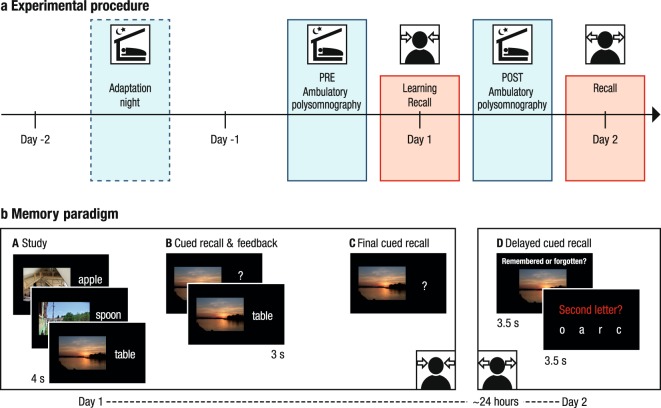Figure 1.
Study design. (a) Experimental procedure. The memory task at the core of the experiment consisted of a learning phase and an immediate recall on Day 1 as well as a delayed recall approximately 24 hours later (red boxes). Sleep was monitored in the nights before (PRE) and after (POST) learning using ambulatory polysomnography (blue boxes). A prior adaptation night (dashed blue box) familiarized participants with the sleep recordings. (b) Memory paradigm (cf. Fandakova et al.64). (A) During study, participants were instructed to remember 440 (younger adults) or 280 scene–word pairs (older adults). (B) During the cued-recall and feedback phase the scene was presented as a cue to recall the corresponding word. Irrespective of recall accuracy, the original pair was presented again to allow for re-study. The whole cued-recall and feedback cycle was performed once in younger and twice in older adults. (C) During final recall, scenes again served as cues to recall the corresponding word, but no feedback was provided. (D) Delayed cued-recall took place approximately 24 hours later. Participants were presented with the scenes only and had to indicate if they still remembered the associated word. Afterwards they had to select the corresponding second letter of the word to verify their true memory of the associate.

